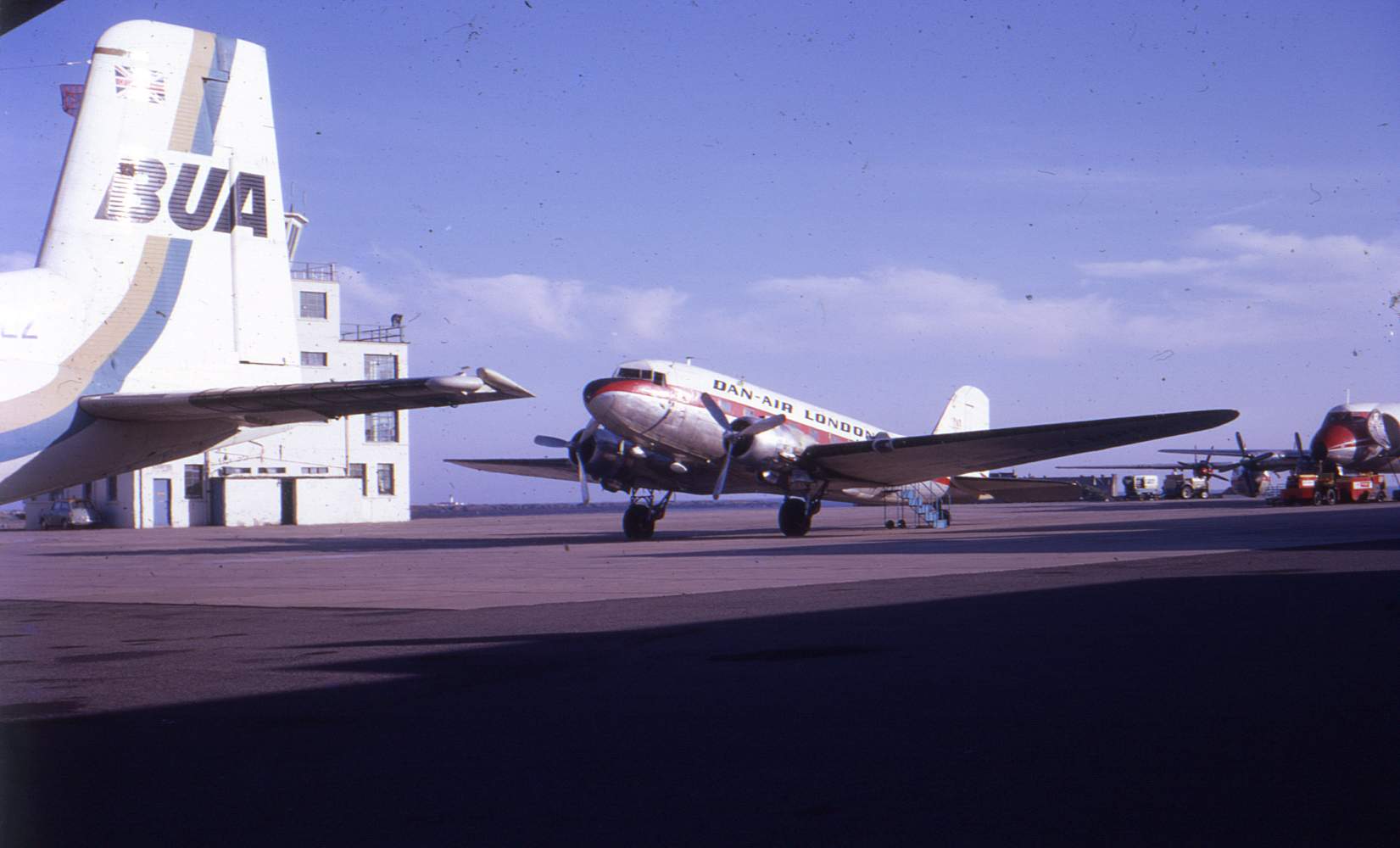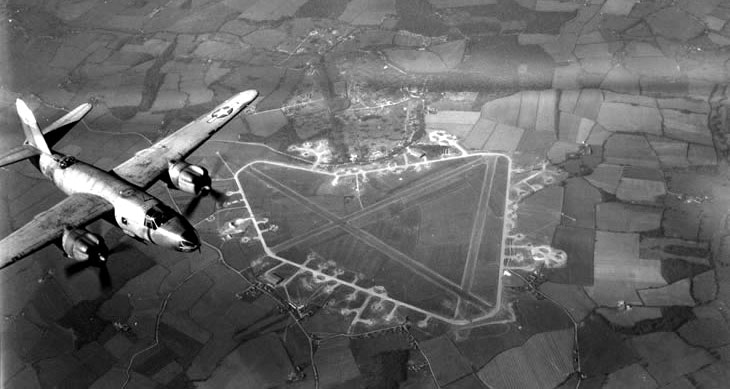
FOLKLORE AND HISTORY.
There are many references to Earls Colne airfield and its residents across the Internet and some excellent reference books detailing the operations of the USAAF Eighth and Ninth Air Forces. On this site I aim to fill in some parts of the historical framework with extra details – some of which can definitely be described as ‘unreliable memories and unsubstantiated tales’…..Some details are from my early memories of the airfield in the 1960s, some from the stories (tall and otherwise) related by older and wiser neighbours.
Although the USAAF bombers seem to have etched themselves deeper into the local consciousness than the RAF Bomber Command squadrons, the latter contributed successfully to the Rhine Crossing, Operation Varsity, the largest airborne invasion force that the World has ever seen. They also, unofficially, fielded the only woman to fly on the Varsity mission and managed to keep the fact fairly secret for many years. Day-to-day operations included bombing operations, air sea rescue and supply drops to SOE groups across enemy-occupied Europe and Scandanavia. The latter involved multiple Halifaxes departing individually on moonlit nights to navigate their lonely way across the North Sea to drop armaments and agents to small groups of brave partisans waiting around signal lights in farm fields and forest clearings. The details of the RAF operations are mostly taken from the Squadron’s own Operations Record Books which are available from the UK National Archives.
Photos from the sixties and seventies are largely from personal files but the WW2 shots used are from official military sources, the Imperial War Museum and Roger Freeman’s amazing collection with the American Air Museum division of the IWM archives.
THE CONSTRUCTION OF THE AIRFIELD.
The airfield at Earls Colne was constructed in response to World War 2 and, in particular, the arrival of the United States Army Air Force following the entry into the war of the USA. The Eighth Air Force was formed in January 1942 as a component of the USAAF and the initial aim of the Allies was to move 60 combat groups across the Atlantic to Britain by April 1943. Eight airfields already in use by the RAF were assigned for American use and construction of suitable new air bases kicked-off under the Bolero programme.

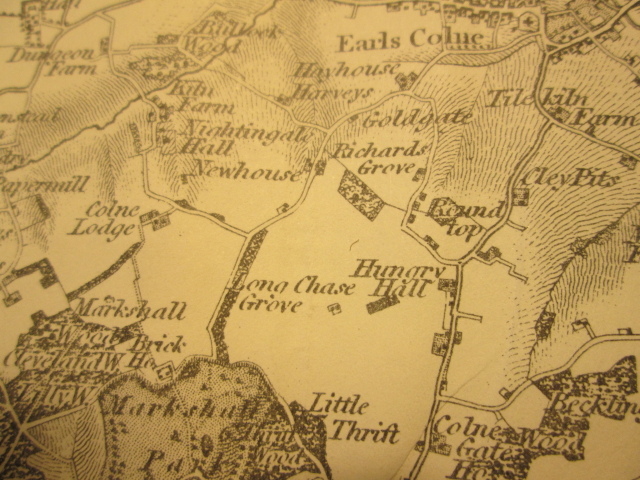
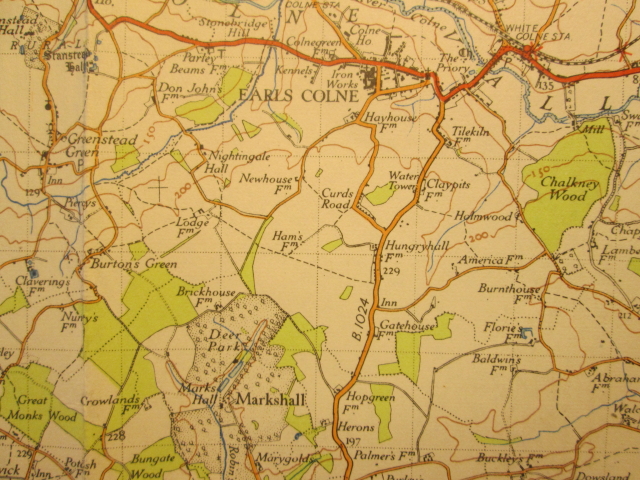
1940s CONSTRUCTION:
While many of the new RAF and USAAF bases were built by contractors such as Wimpey, Costain and Laing, several Essex airfields were constructed by the US Engineer Aviation Battalions. Earls Colne was the first Essex airfield to be built for heavy bombers and is variously described as being constructed by the US Engineers and British contractors W.S.French (1). Similarly, building start dates are variously given as between September 1941 and the summer of 1942 although January 1942 seems to be the most likely for the commencement of main ground works (2) (4). RAF control was assumed initially on August 26th 1942 (1) by No.3 Group Bomber Command at Harraton House in Suffolk and at RAF Stradishall. Eight RAF officers and 249 airmen, commanded by Squadron Leader J.C.Dalby, opened the airfield for the RAF in September 1942. Primary roles would have been the Equipment Manager, NAAFI Manager and Camp Medic. However, as the airfield had been assigned for USAAF use, additional construction was still required to bring it up to the specification suitable for a full 4-squadron Bomb Group.
The first American personnel arrived at Earls Colne on October 8th 1942 as part of a 600-strong service unit. The incomplete airfield reportedly received its first USAAF aircraft the very next day when a B-17F from Chelveston made an unscheduled landing on the way home from a mission to Lille (2) (4) (6). Construction was finally completed by Spring 1943 but, aside from visits by Lockheed F-5 Lightning photographic ships, the first operational aircraft didn’t arrive at ‘Station 358’ until the B-17 Flying Fortresses of USAAF’s 94th Bomb Group touched-down on May 27th 1943.
(1) The main groundworks at Earls Colne were probably completed by the contractors French with supplementary work later carried-out by the US engineers. 1942 was the peak year for airfield construction in England with one new site being handed over, on average, every 3 days.
(2) UK Airfields of the Ninth -Then & Now, Roger Freeman, After the Battle, 1994.
(3) Mighty Eighth War Diary, Roger Freeman, Janes Publishing 1981.
(4) Halstead Gazette & Advertiser, Sept. 9th 1983.
(5) Action Stations, Michael J.F.Bowyer, Patrick Stephens, 1979.
(6) Roger Freeman’s book ‘Airfields of the Ninth’ suggests that the emergency landing was made by 301st BG B-17F 41-24352 heading home to Chelveston from an attack on Lille and Roubaix. An article in the Halstead Gazette quotes Podington as the bomber’s base. Podington was occasionally used by 301st BG as a satellite to its Chelveston base, so both could be correct.
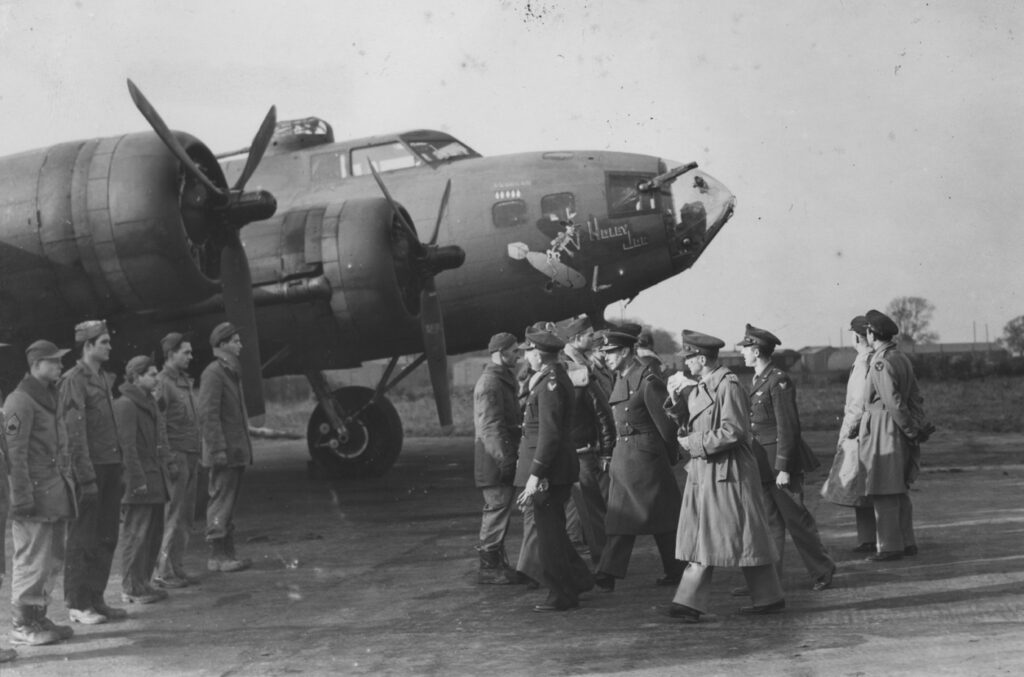
The specifications for a standard operational airfield included three paved runways, the main being in line with the prevailing wind, the two auxiliaries offset to the main by 60 degrees in opposing directions. At Earls Colne, this gave the main runway an orientation of 10 degrees/ 190 degrees with auxiliaries at 70/ 250 and 120/ 300. The margins of each runway and the perimeter tracks were to be 30′ wide grass strips and there was to be no building within 150′ of the centre line of the 50′ wide taxiways. The specification called for 36 panhandle hard-standings for parking aircraft at dispersal. On June 4th 1942, following the designation of the base as a USAAF heavy bomber station, a further 16 loop (sometimes called ‘spectacle’) hard standings were added (2) (9). Two T2 hangars were erected and remain in place today – demonstrating what large and useful structures they are. Aircraft maintenance in the hangars was supplemented by a large amount of servicing carried-out at dispersal in the, sometimes, biting East Anglian winds. While the main cost component of airfield construction in the interwar period had been hangars and buildings, the taxiways and runways now came with the highest price ticket.
(9) Specifications from The Archaeology of Airfields by Bob Clarke, Tempus Publishing, 2008 and also the Historic England publication ‘9000 Miles of Concrete – a review of Second World War Airfields in England’ by Paul Francis, Richard Flagg and Graham Crisp.
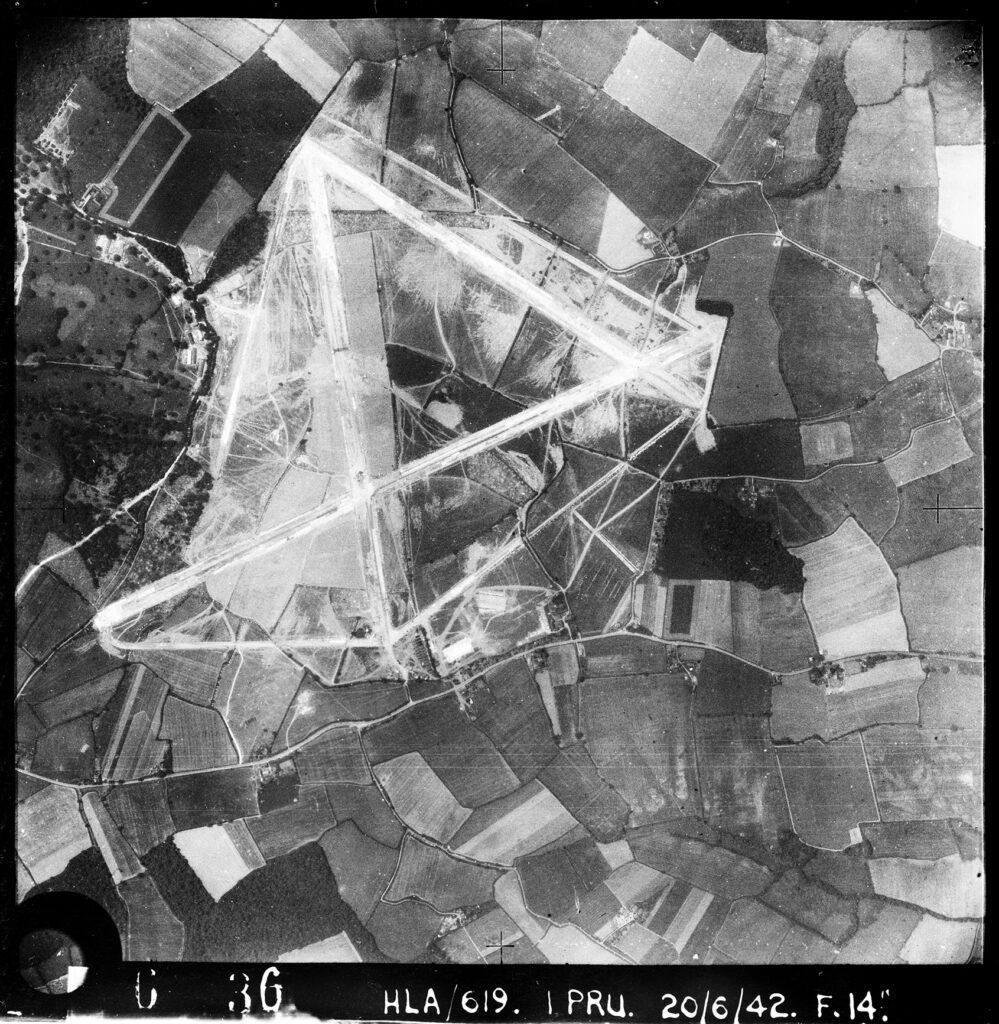
Technical areas, residential buildings and utility areas added literally hundreds of extra buildings. Fuel tanks and ordnance dumps were placed away from the main areas of activity: the aviation fuel dump was between a number of dispersal pans close to the western end of runway 07/ 25, near to Lodge Farm. The brick structure remained, at least, into the late sixties and miscellaneous pipework could also be seen at the edge of a reed-lined pond which may have been created when the main fuel tanks were extracted. The aerial shot of the 1940s airfield (below) is also labelled with a second fuel facility next to the road which enters the airfield from close to Gatehouse Farm on Coggeshall Road. This may have been the fueling point for the motor transport pool – it shows up on the aerial photo as buildings within a semi-circular road and much of this also remained into the 21st century. The ordnance dump was even further from the main airfield on the other side of the B1024 Coggeshall Road in Witches Wood. Live firing was, however, facilitated by the gun butts to the west of the ‘Bird in Hand’ pub. A large hill was constructed by the excavation of a correspondingly deep pit. Aircraft could be moved onto a dispersal point to the west of the butts and the guns fired into the earth bank.
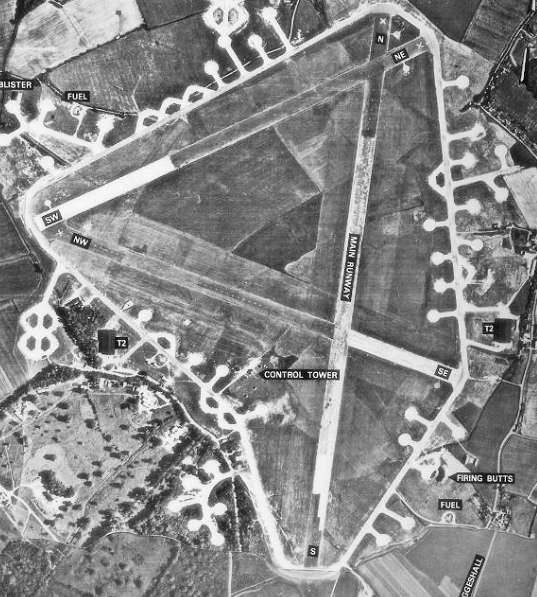
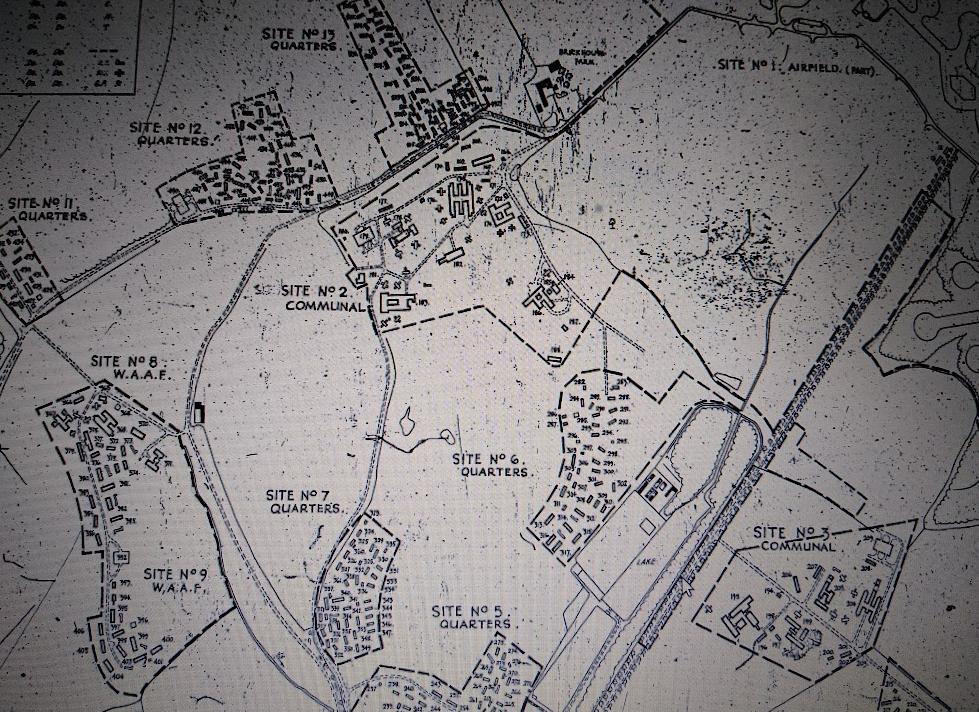
The airfield also provided accommodation for 2750 personnel at several sites dispersed largely in the woods leading towards Markshall. This included mess halls, ablutions and air raid shelters, some built from brick and others constructed from corrugated iron and concrete. This number of billets catered for sightly less than the number of personnel needed to run a USAAF base (2800) but was greater than provided at most RAF Bomber Command bases (2400). Nonetheless, the two RAF Squadrons which arrived in 1945 still complained that there was insufficient accommodation at Earls Colne.
The old Elizabethan Marks Hall had also been requisitioned by the RAF and became the headquarters of the USAAF 4th Bomb Wing, initially responsible for four Bomb Groups including Earls Colne’s first occupants…..the 94th Bomb Group.
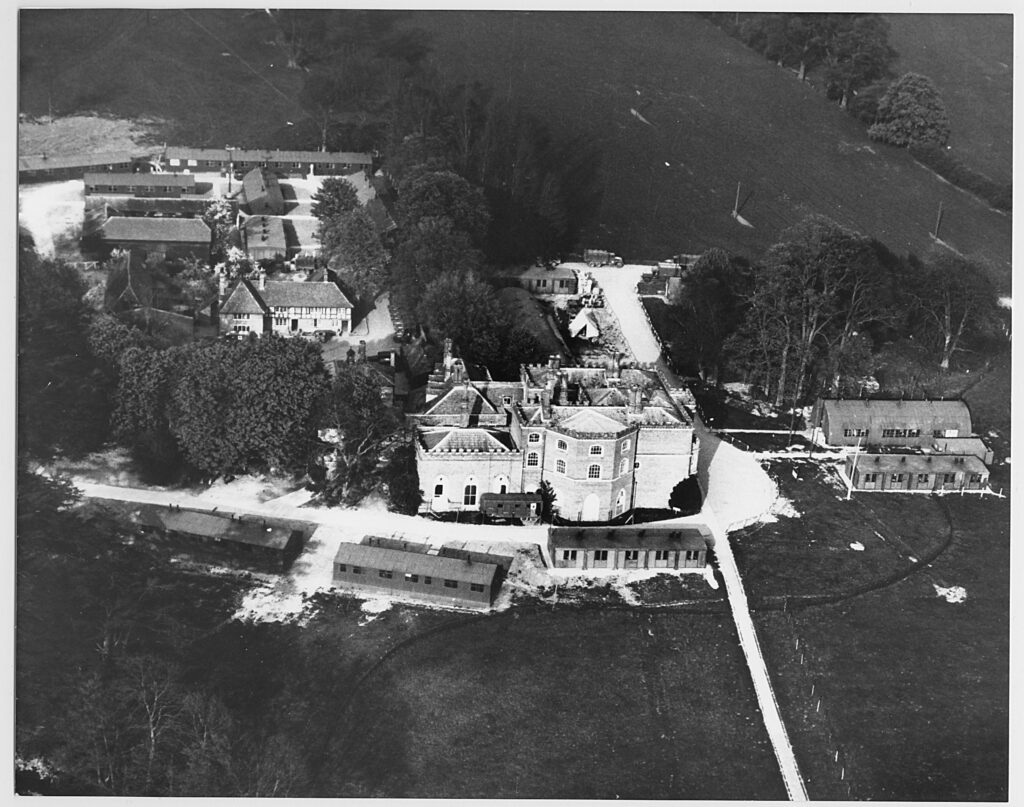
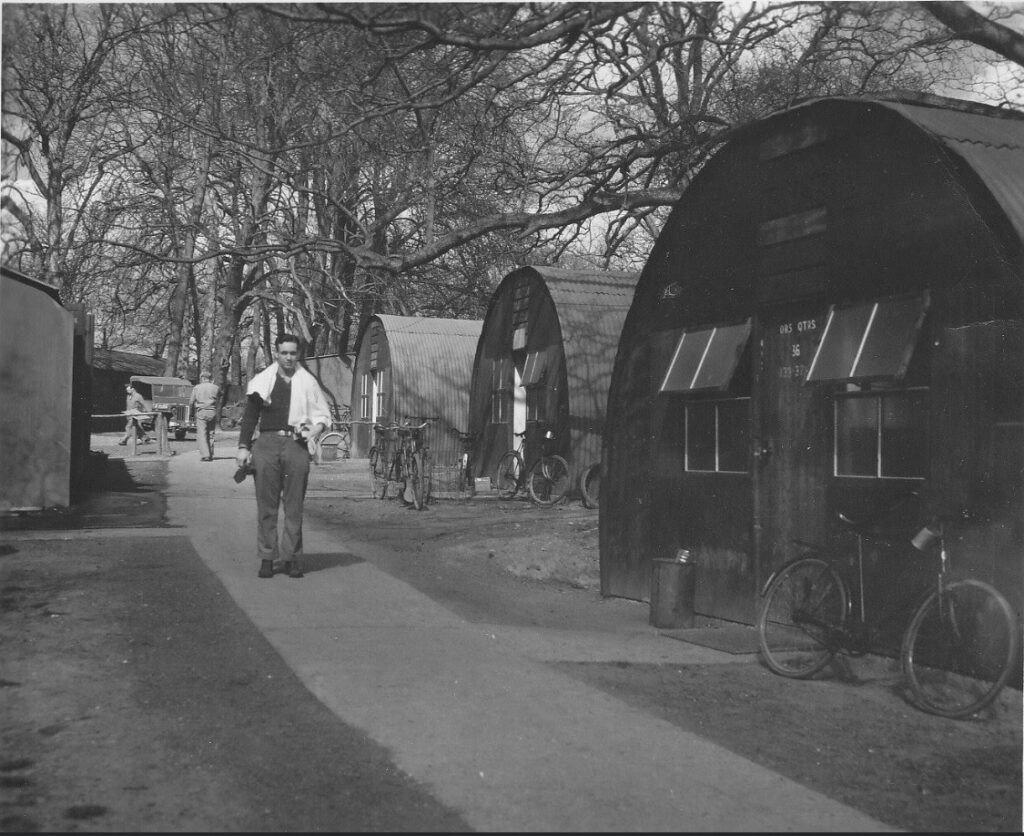
Hits: 271
